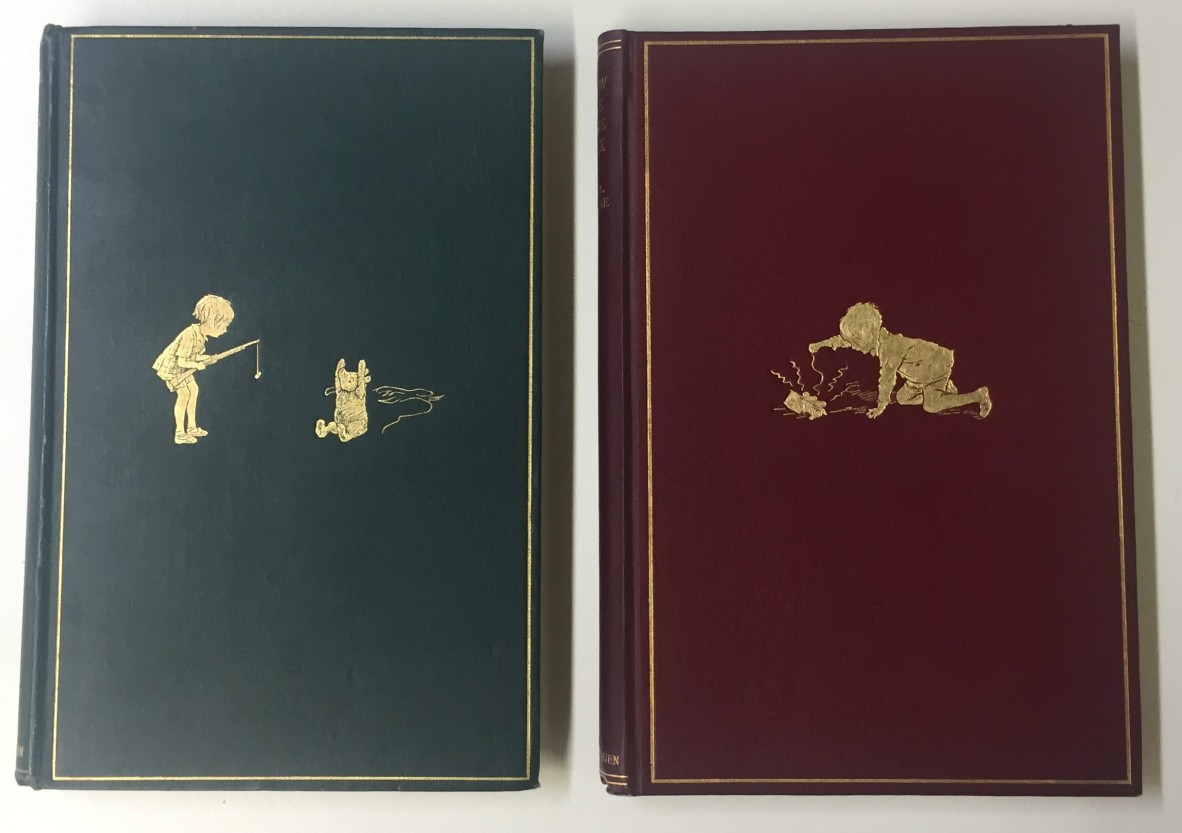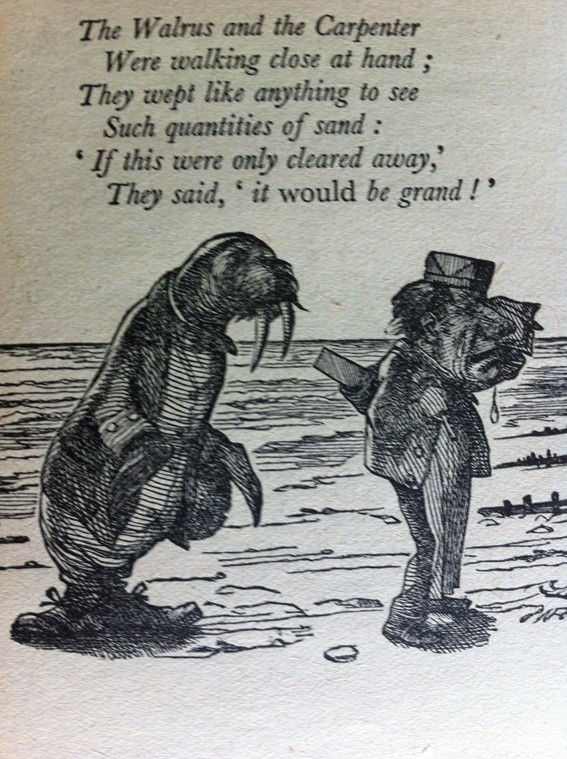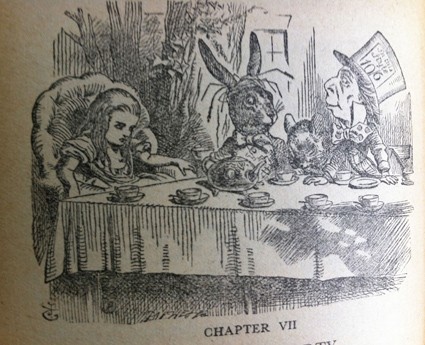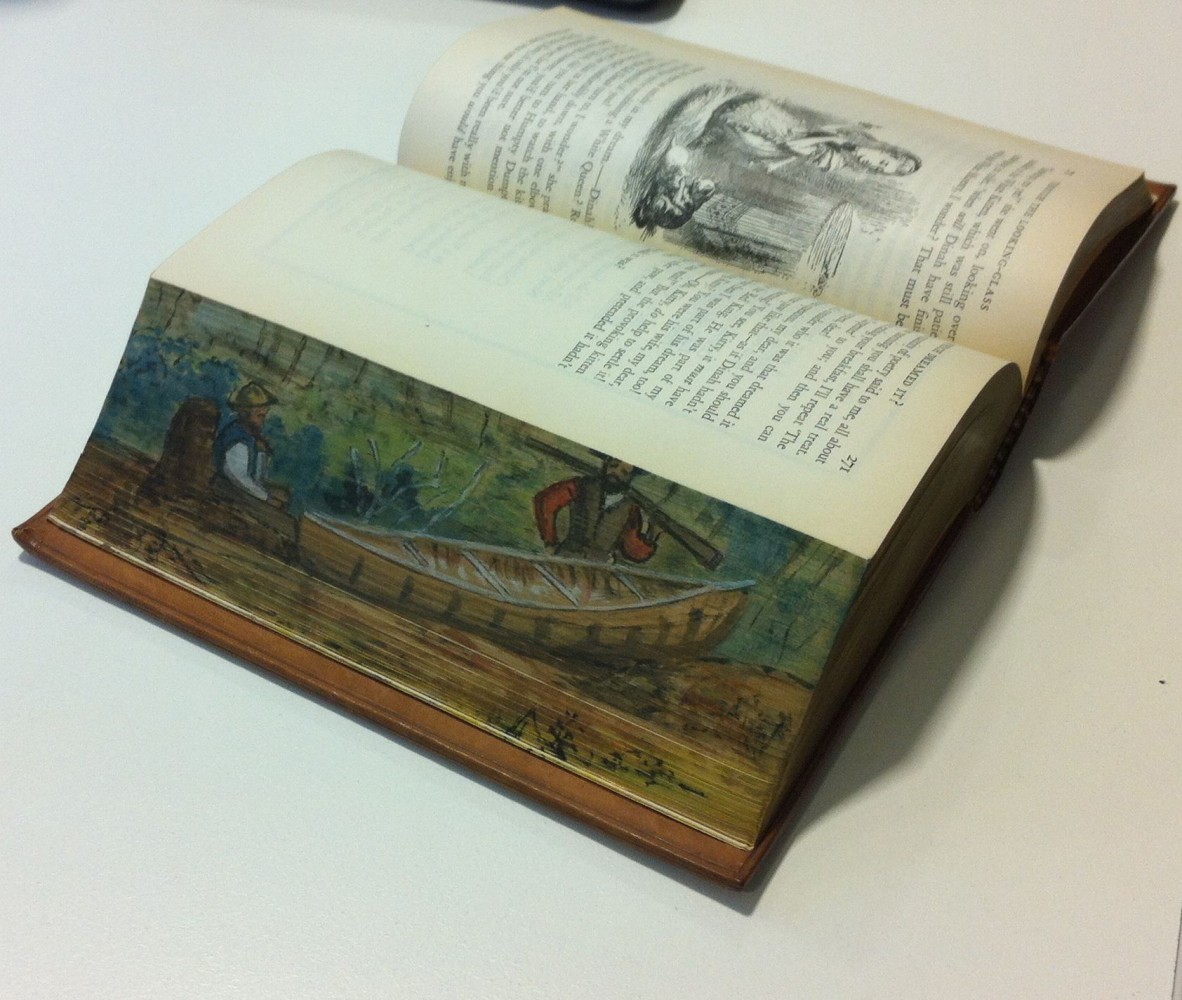When our regular guest blogger artist, Normana Wight decided to look into the illustrators of books from her childhood, little did we know that a fore-edge painting would be discovered on one of the volumes. Locating editions of A. A. Milne’s Winnie the Pooh with illustrations by Ernest H Shepard and Lewis Carroll’s Alice's Adventures in Wonderland with illustrations by John Tenniel proved a little more of a challenge than expected; however books were found and Normana commenced her reminiscences.
Read on to share Normana’s story of two illustrated children's books.
In a change of direction, I am going to look at two children’s books from the SLQ collection, that are about art in that they have illustrations that are not only works of art, but combine with text to become something wonderful and unique in the world of books.
First is A. A. Milne’s Winnie-the-Pooh, with illustrations by E H Shepard. Four books; When We Were Very Young, Winnie-the-Pooh, Now We are Six, and The House at Pooh Corner were published between 1924 and 1928 by Methuen. Two of these early publications are in the possession of the State Library of Queensland – Winnie the Pooh and Now we are six.

Covers: "Winnie the Pooh" 1926 & "Now We Are Six" 1927
I can’t show you the wonderful illustrations that make such an important part of the original publications, because E H Shepard lived till 1976! (97 years old.) Which means that the drawings are still in copyright. THAT means that I cannot illustrate my blog with some of those memorable drawings.
However; if you have read or heard of these wonderful stories about a little boy’s childhood in England during the inter-war years, you can come to the State Library of Queensland and borrow an actual volume, to read here, in the library at South Bank.
If you are old, the experience will recall a time when there WAS time.
If you are English-born – ‘Say no more!’
If you love children’s stories, or if your parents read them to you when you were 3, or 6 years old, you will be able to recall this entertaining and memorable approach towards learning to read.
The second book is a small and curious edition of Lewis Carroll’s Alice in Wonderland with the Hunting of the Snark and poems from Sylvie and Bruno illustrated by the author.
Also in the collection are several editions of Alice’s Adventures in Wonderland and Through the Looking Glass by Charles Dodgson, AKA Lewis Carroll. Surrealism?
The most exciting –or – complete books by Lewis Carroll (Charles Dodgson) are those illustrated by Sir John Tenniel. Fantastical stories, wild and funny, and quite scary, are also important works – suggesting the times in which the magical combination of word and image were woven together in a perfect, gripping arrangement. These two works were first published, with illustrations by Sir John Tenniel, in 1865.


Then, we come to The Complete Works of Lewis Carroll, with – not only the illustrations by Tenniel, BUT also - on the gilded fore-edge there is a painting of a canoe!

Normana Wight, July 2017.
The gilding on the fore-edge of the volume The Complete works of Lewis Carroll published by The Nonesuch Press, London in 1939 looked worn in comparison to the crisp gilding of the head and tail of the book.
Fanning of the fore-edge revealed a painting after the work Trappers Resting by Winslow Homer painted in 1874. A pencilled price, lot number, the word fore-edge and a missing bookplate in the book suggest that it was likely to have been purchased by the Library for the fore-edge painting. Previous owners enjoying the painting may be the reason for the faded gilding of the fore-edge. A missing subject heading in the catalogue record was responsible for the oversight in knowing of the painting’s existence despite a note ‘with fore edge painting’ appearing in the record.


The History and Art of the Book collection includes books on the subject of fore-edge painting as well as examples of this fascinating craft. An article by Jeff Weber, antiquarian book dealer and noted authority on fore-edge painting provides an introduction to this interesting form of book decoration.
Christene Drewe, July 2017.
Comments
Your email address will not be published.
We welcome relevant, respectful comments.